The New IWC Big Pilot’s Watch 43 Spitfire Titanium and Bronze (Live Pics & Price)
Vintage mil-spec flight path for the 43mm Big Pilot Spitfire editions.
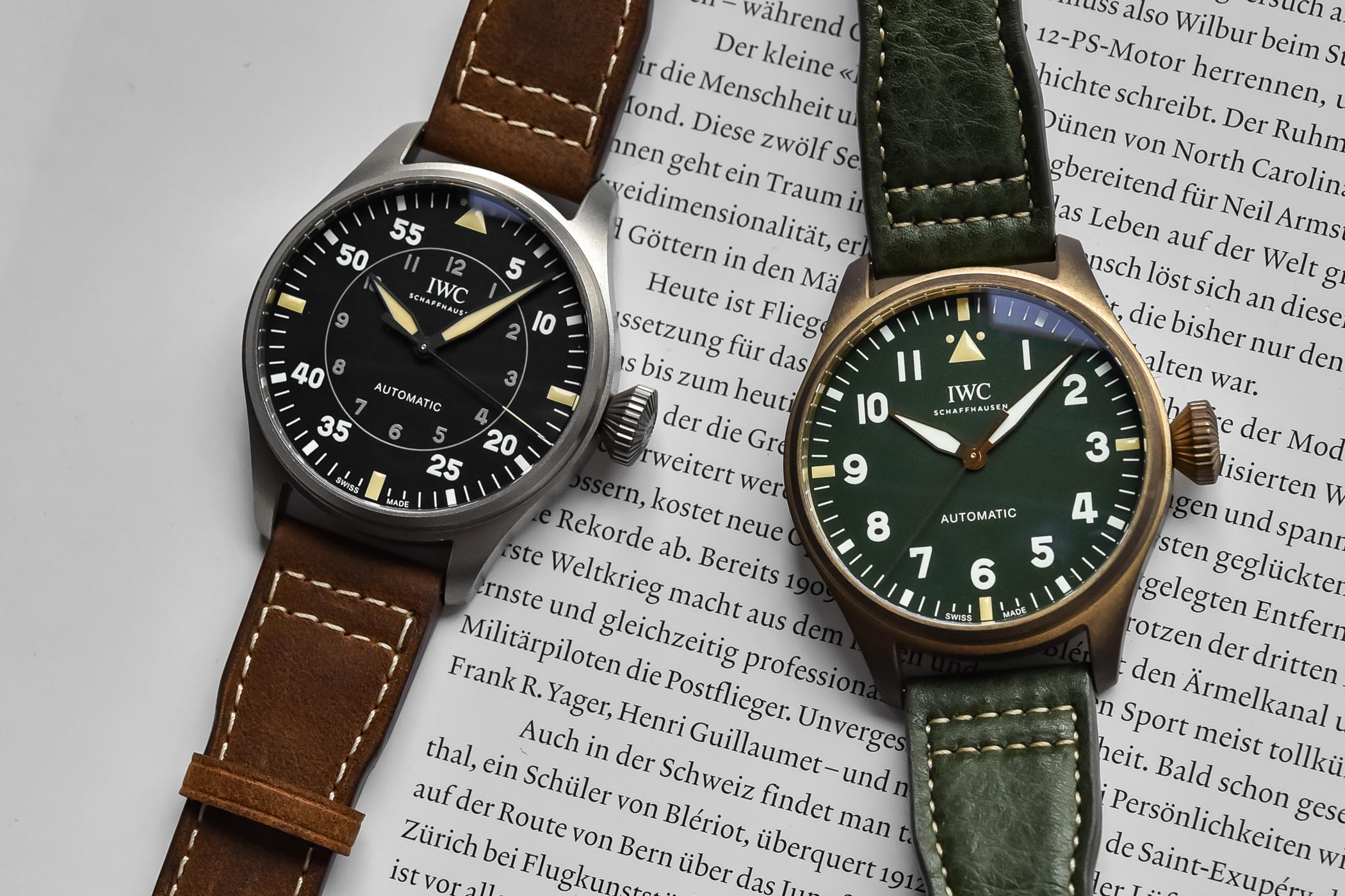
When IWC Schaffhausen presented a downsized, tamer 43mm edition of its Big Pilot’s watch in April this year, there were mixed reactions. For purists, anything smaller than 46.2mm did not cut it as a Big Pilot, but for consumers interested in getting their hands on the archetypal pilot’s watch, the news was well-received. Along with its iconic Big Pilot looks, a simplified display, new interchangeable strap system, and more importantly, a more accessible price tag, the 43mm proved a more versatile, more wearable option for many. The latest editions joining the Big Pilot’s Watch 43 collection bring the vintage flair of the Spitfire sub-collection with an evocative bronze model with a military green dial (IW329702) and a sandblasted titanium case with a classic black pilot’s dial (IW329701).
B-Uhren background
Like many watch manufactures, IWC was conscripted in the war effort to produce watches. Referred to as the “Grosse Fliegeruhr” or Big Pilot’s watch because of its formidable 55mm case, IWC’s 1940s B-Uhren observation watches were supplied to navigators and pilots of Germany’s Luftwaffe. Distinguished by their large crowns that could be manipulated with gloves, their oversized luminous hands, markers and orientation triangle with two dots, the watches were robust and highly legible cockpit tool watches with precision pocket watch movements. The B-Uhren had two basic dial configurations: Type A with a triangular marker and two dots replacing the number 12 and Type B with a peripheral chapter ring with minutes from 5 to 55 and a smaller central ring with hour numerals.
Although production ceased after the war, the design features of these military tool watches left their imprint on future pilots’ watches. The Grosse Fliegeruhr was resuscitated in 2002 by IWC with the 46mm Big Pilot’s Watch (IW5002). Hallmark features of the watch included the massive diamond-shaped crown, a large automatic movement with a 7-day power reserve protected from magnetism by a soft-iron case, a date window at 6 o’clock, a power reserve indicator on the dial and a long, riveted leather strap. If you would like to learn more about this fascinating chapter in watch history, please consult our in-depth article on B-Uhren.
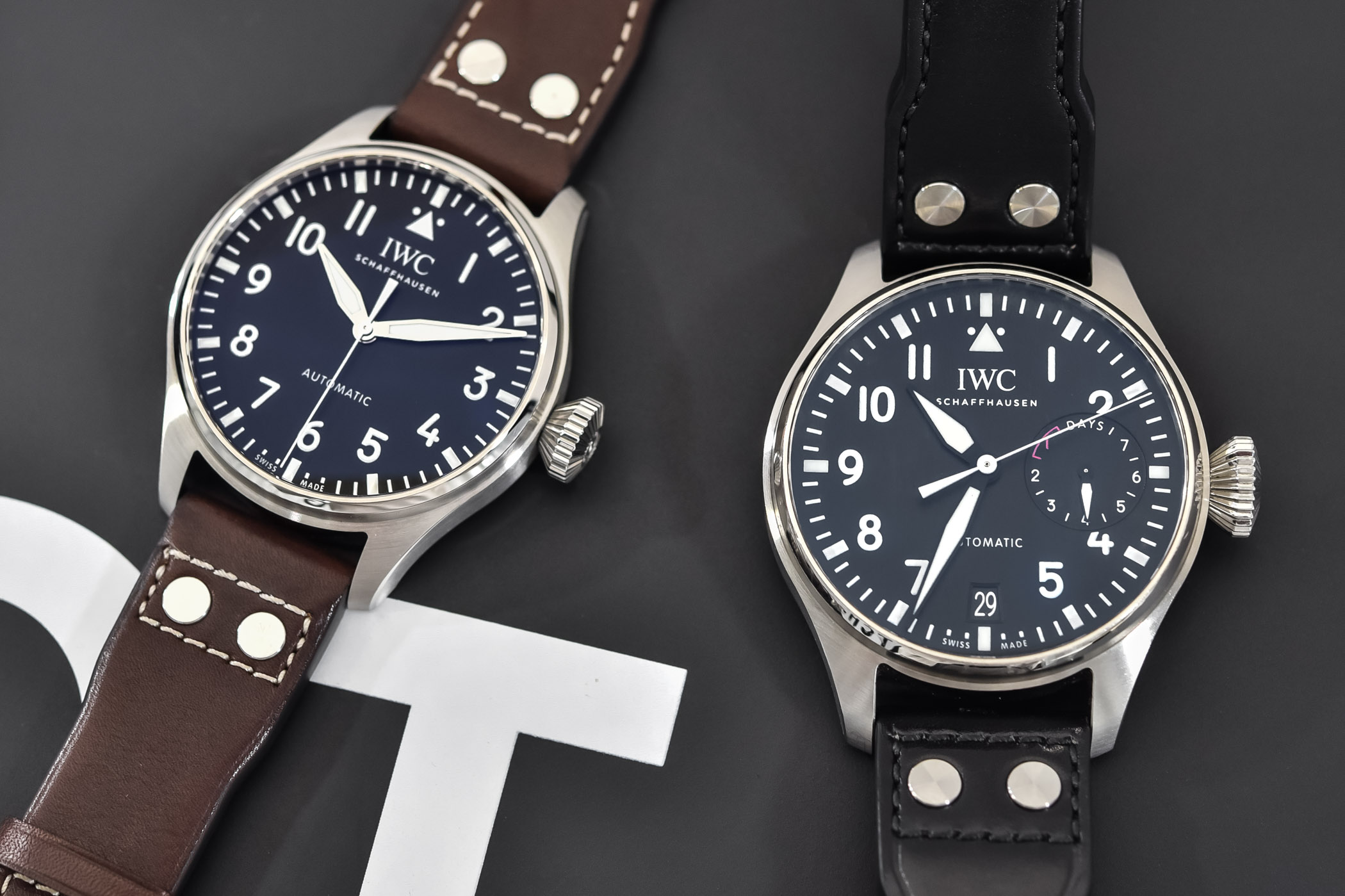
The introduction of the 43mm Big Pilot’s retained practically all the iconic design features of the larger models with its thin bezel, large expanse of dial, diamond-shaped crown and excellent legibility, but it introduced upgrades like the increased 100m water-resistance. However, to keep its price in check, the Big Pilot’s Watch 43 models are equipped with a more straightforward mechanical movement with Pellaton winding and a 60-hour power reserve. Another difference compared to the larger 3-hand model is the elimination of the date window and power reserve indicator.
Spitfire = Vintage flair
The two new Spitfire editions of the 43mm Big Pilot’s increase the vintage vibe of the watch with the choice of case materials and dial colours. The dark grey titanium model has a matte sandblasted surface treatment and a black dial inspired by historical observation (B-Uhren) watches. Like the Type B observation watches of yesteryear, the dial displays the minutes/seconds on a peripheral track and the hours on a smaller internal ring. Traditionally, this layout made it easier for pilots and navigators to read the minutes and seconds at a glance and is similar in layout to the historical regulator clocks. Another detail that underscores the vintage soul of the Spitfire is the use of beige lume on the orientation triangle and two dots, the broad markers at 15, 30 and 45 min/sec on the outermost track and the interior of the hour and minute hands and the tip of the long seconds hand. In contrast to the bold white numerals on the peripheral track, the hours are grey.
The second model plays the retro card perfectly and combines the appealing warmth of bronze with a classic military green dial. Made from an alloy that is 50 per cent harder than standard bronze, the warm bronze case will still develop a unique patina over time. Corresponding to the simpler Type 1 B-Uhr model, the matte green dial displays a sharply defined minutes/seconds track with bold white Arabic numerals and the orientation triangle at noon. Like the titanium model, the well-dosed amount of vintage lume to evoke the radium paint on historic fliegers is limited to the four indices and the triangle. The three central hands are gold plated and, like the indices, are treated with regular white lume.
Equipped with one of the most uncomplicated strap change systems (EasX-Change), the leather straps of both models can be quickly exchanged for a strap of your choice – editor’s note: the watches you see in this article are early prototypes, not yet equipped with the EasX-Change. The titanium model comes with a brown calfskin strap with beige stitching and a titanium folding clasp; the bronze with a green buffalo leather strap, also with beige stitching but a bronze pin buckle.
Automatic Calibre 82100
In keeping with the rugged military field watch aesthetic, both models have sealed titanium casebacks engraved with a Spitfire aeroplane in the central medallion. Beneath the caseback is IWC’s in-house calibre 82100, an entry-level automatic movement with Pellaton winding reinforced with ceramic components and a comfortable power reserve of 60 hours. Unlike the ‘regular’ Big Pilot’s Watch 43mm models released earlier this year with sapphire casebacks, these two models have a soft-iron case to protect the movement against magnetism and, like other IWC pilot’s watches, the glass over the dial is secured against displacement caused by drops in air pressure.
Availability & Price
The IWC Big Pilot’s Watch 43 Spitfire Bronze (ref. IW329702) retails for CHF 9,900, the IWC Big Pilot’s Watch 43 Spitfire Titanium (ref. IW329701) for CHF 9,500. Both are launched as non-limited editions and are part of the permanent collection.
More information at IWC.com.

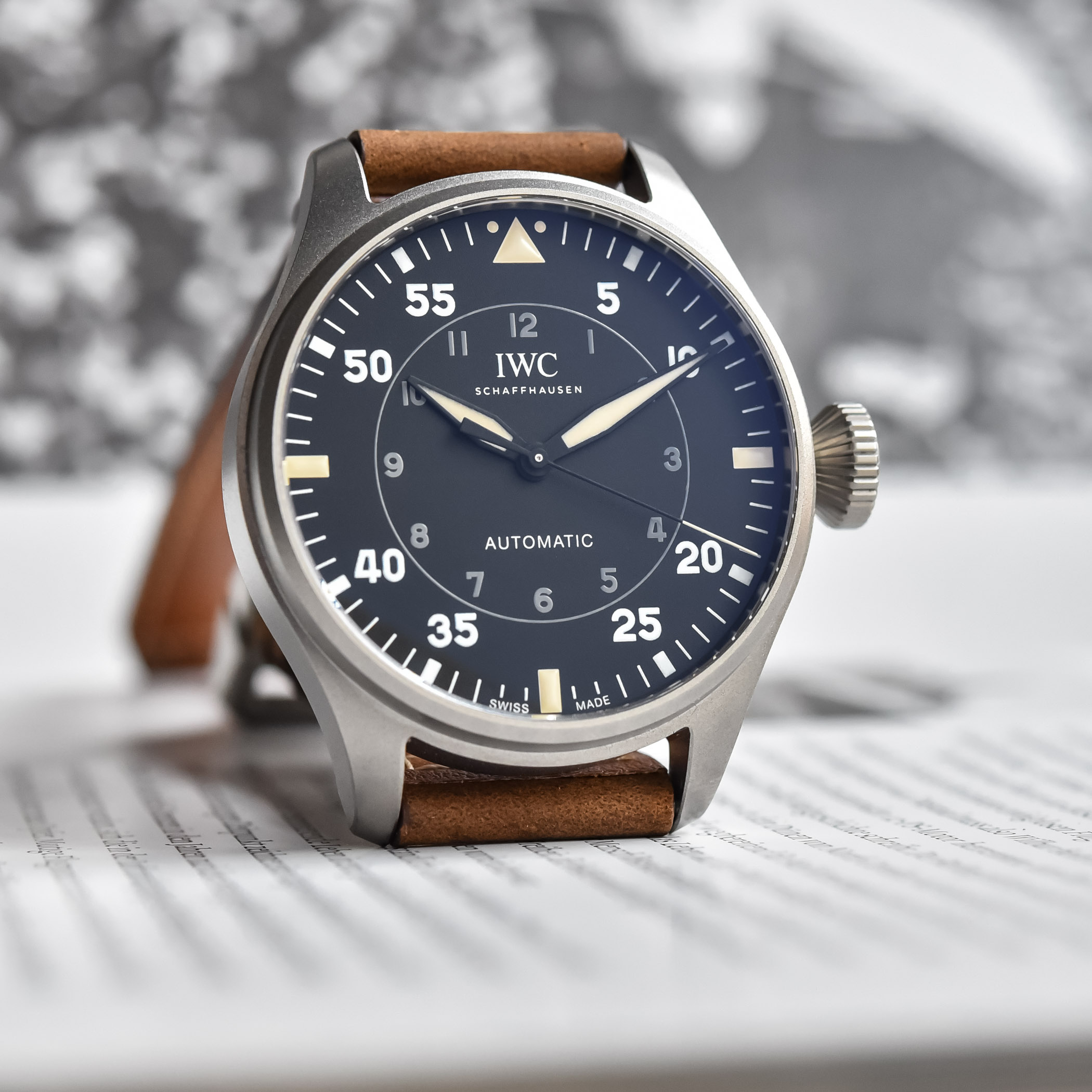
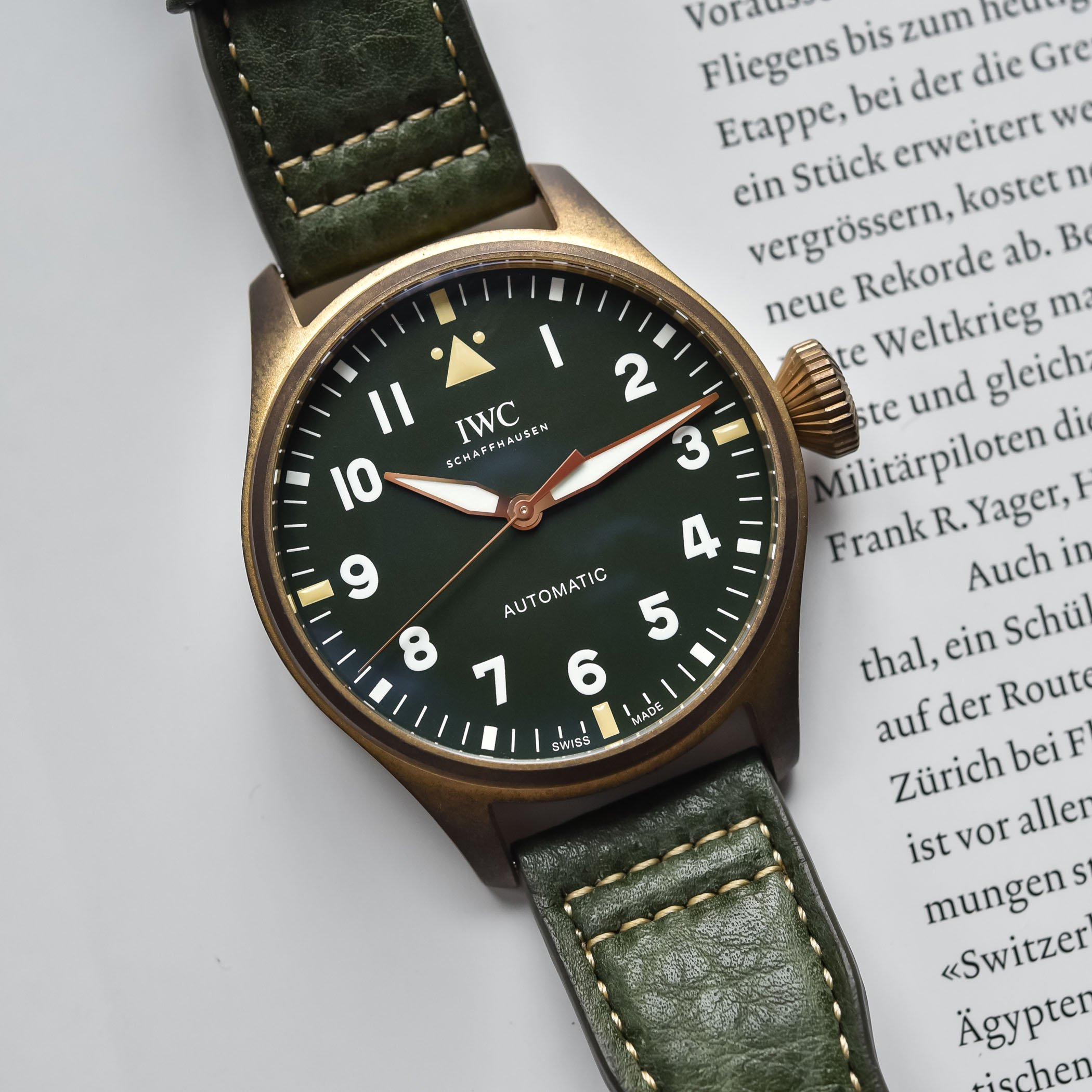
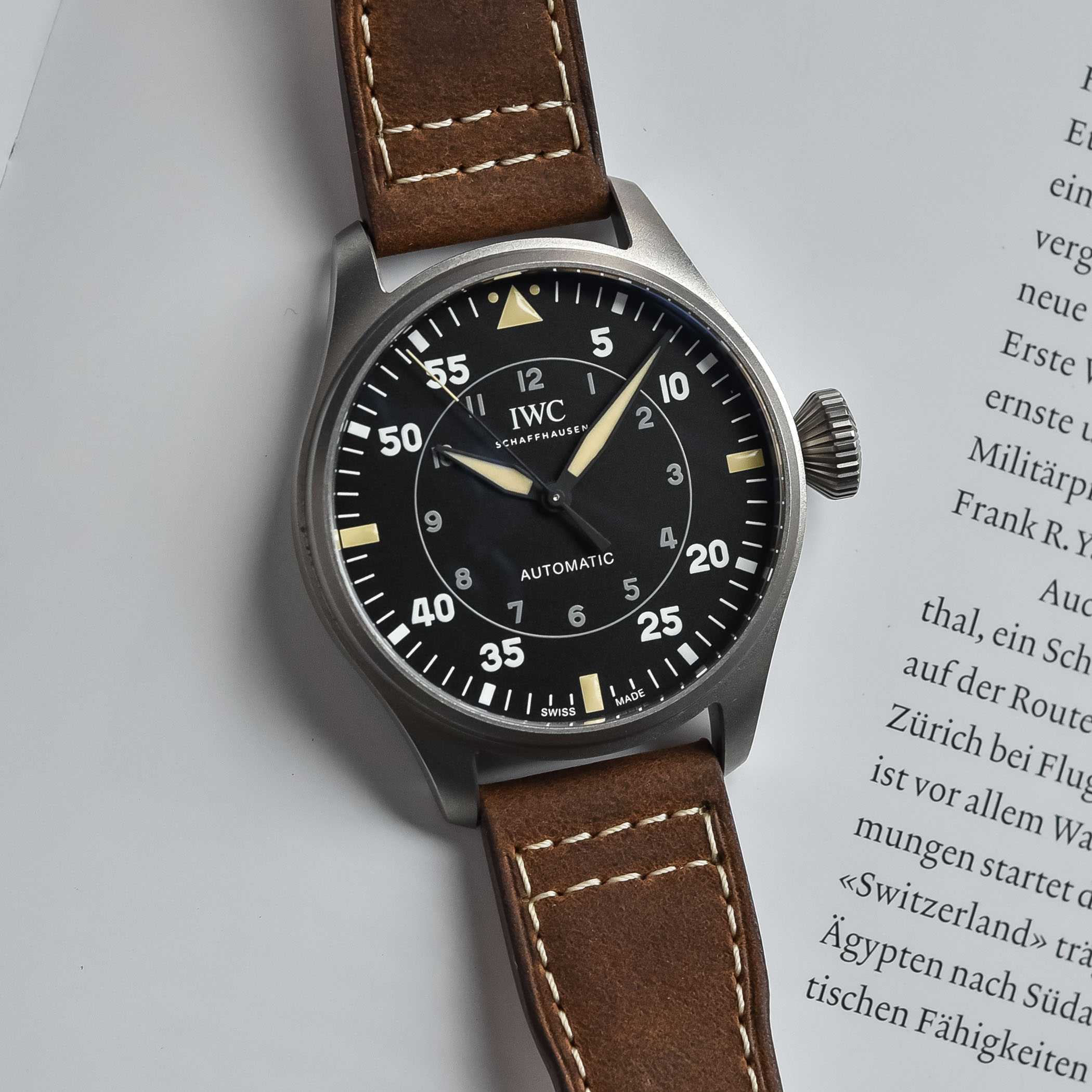

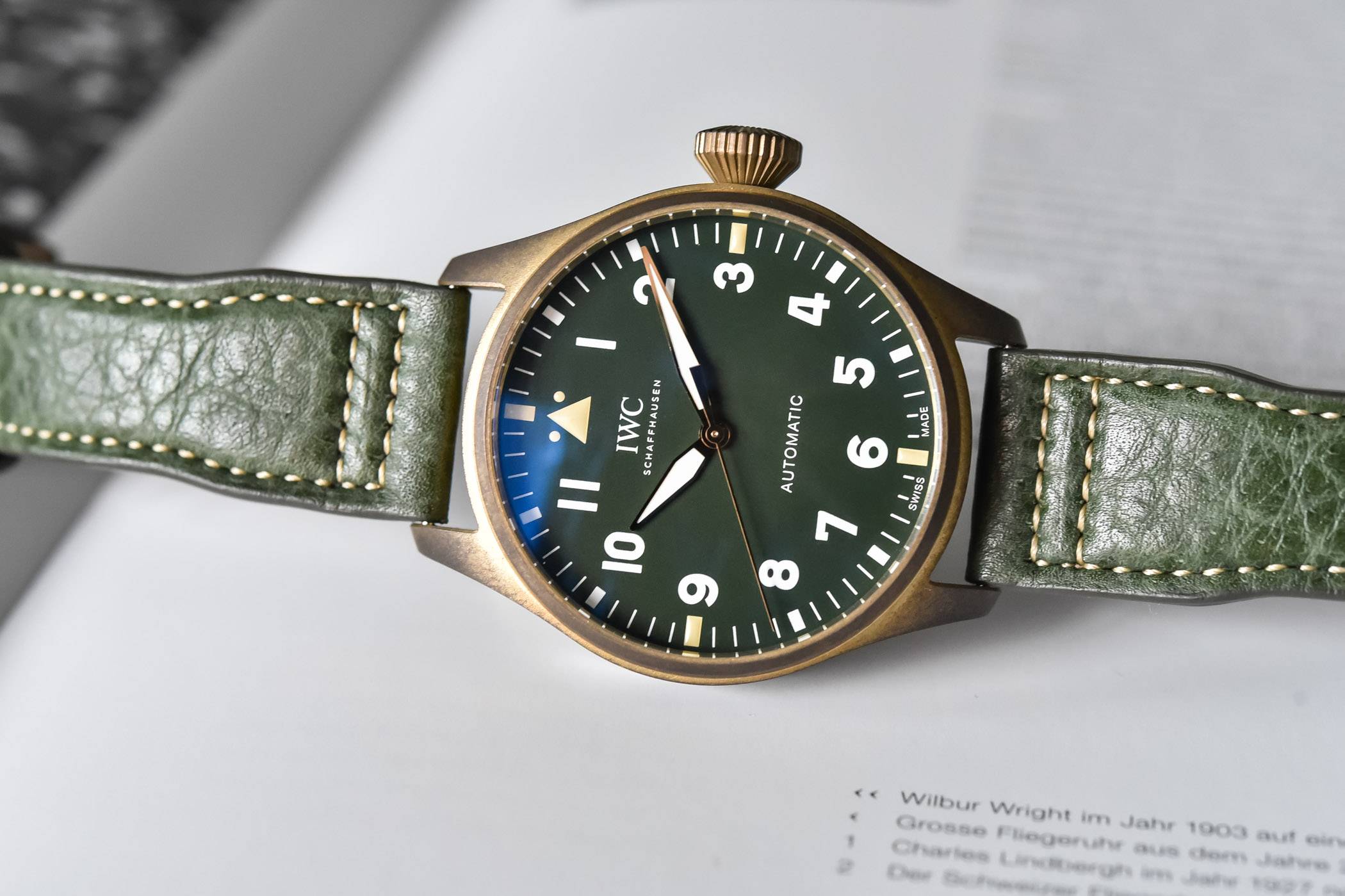

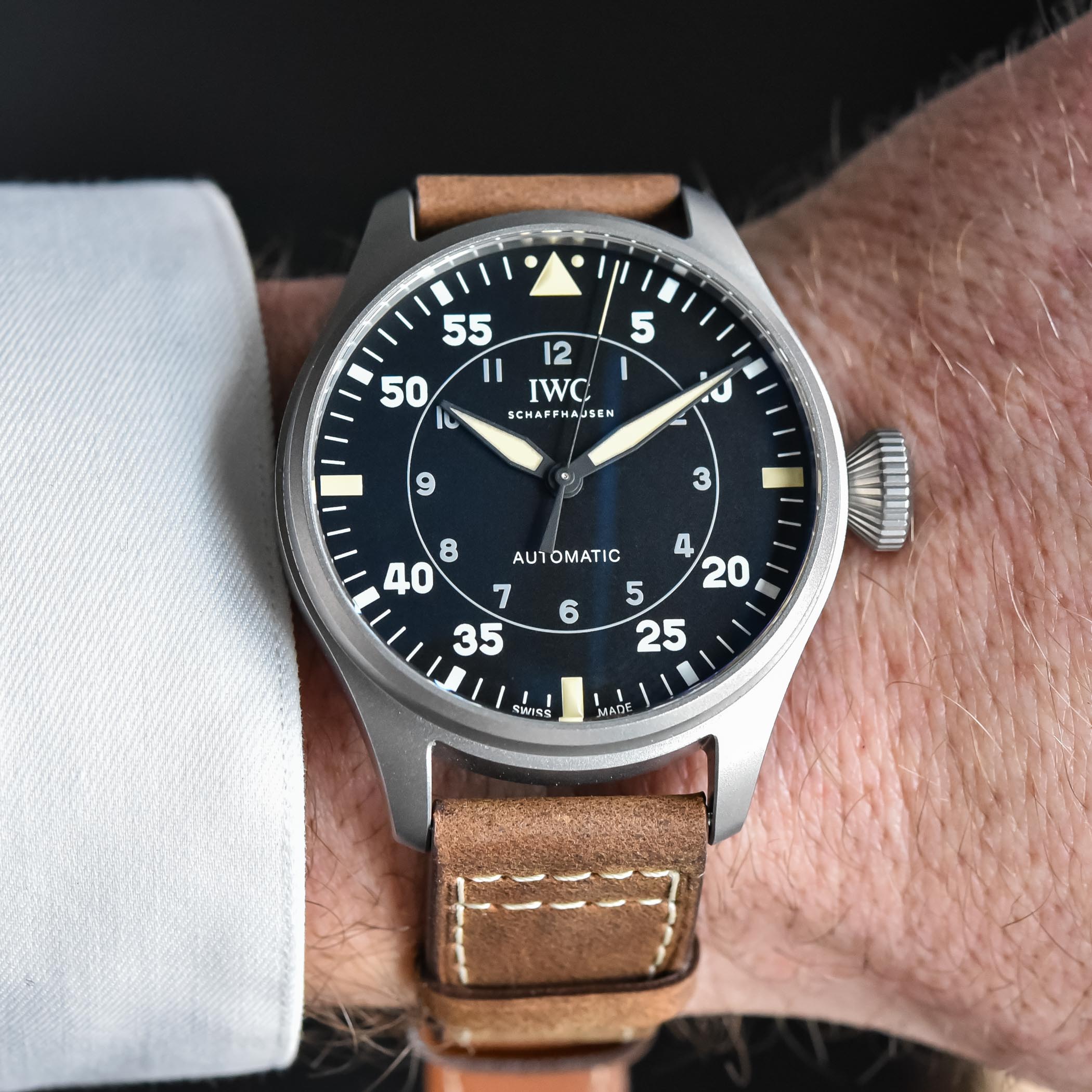
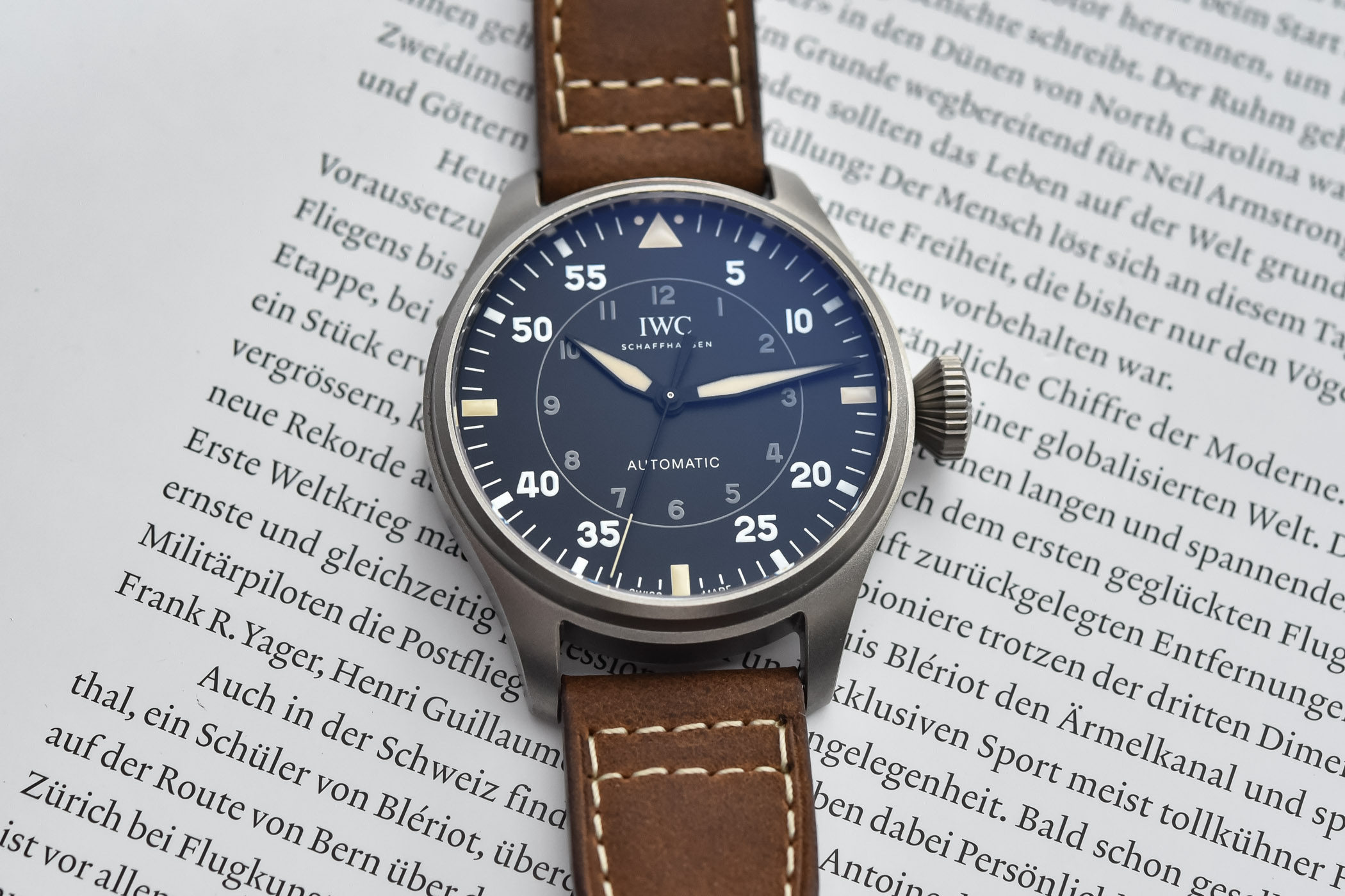
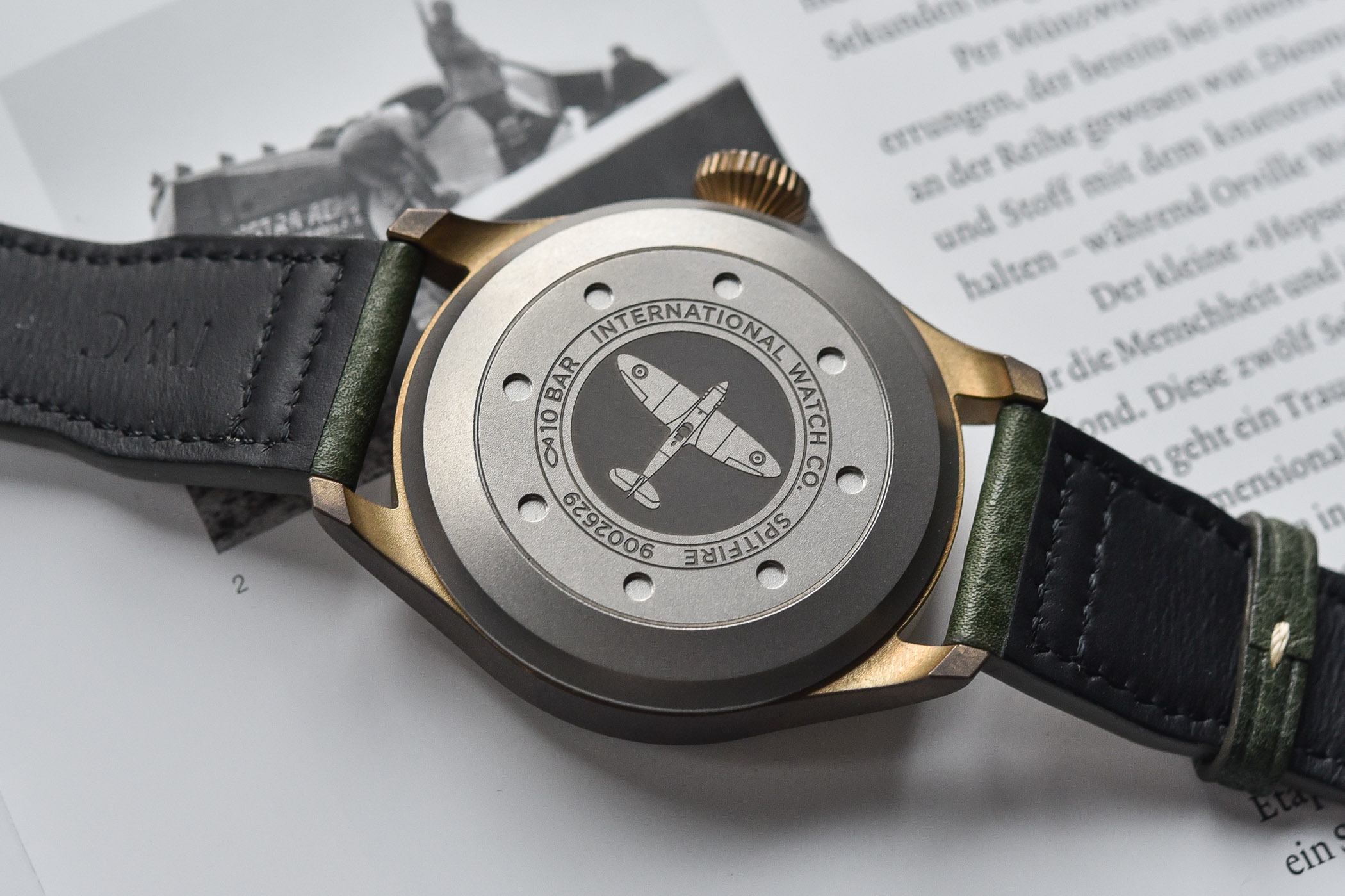



4 responses
Is IWC trying to do some dark humor? Having the titanium version taking the B-Uhren design from the luftwaffe and calling it spitfire. Did anyone take history calls in the marketing department. Idiotic and should I say unrespectful. I don’t mind a B-huren design as long as it try not to pass from something that it is not.
They were “Accidentally “bombed by the u.s.army airforce in1945.
Remember the Alamo!
I am glad that others have noticed the cynical and repugnant use of the Spitfire name to try to “clean up” what is essentially a reproduction of a Nazi war artifact. While Switzerland was neutral during World War 2 many of its watch manufacturers were not. Famously Omega only made watches for the Allies and refused point blank to make watches for use by the Axis powers, something Rolex cannot claim to have done as they made watches for the militaries of both the German Nazi and Italian Fascist regimes. IWC did not make watches for the Royal Air Force during World War 2 and was only adopted as watch supplier by the RAF in 1949, by which point virtually all Spitfires had been retired, so it not very likely that IWC watches were ever issued to aircrew who flew the Spitfire. The use of the name “Spitfire” by IWC for this type of watch is wholly misleading, perhaps a better name would be “Bf109” or “He111”. having said all that the article is, as usual, well written and Monochrome’s photography is second to none, though I do miss the bracelets on the wrist shots.
Let’s not beat up the Swiss manufacturers for having supplied both the Allies and the Axis powers. If you are neutral, you can trade with both sides. However, I do agree on the Spitfire designation for a watch that is essentially taking its design from the Baumister A German for the Luftwaffe being a bit „odd“, shall we say. Looking at the titanium version, I would have wished that IWC had fully aligned the dial lay-out to the Baumuster B watches, hence I view it as a missed opportunity – on the other hand IWC has never produced Baumuster B, so they could probably do whatever they want…